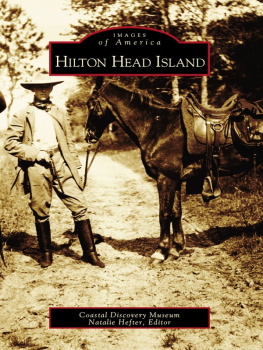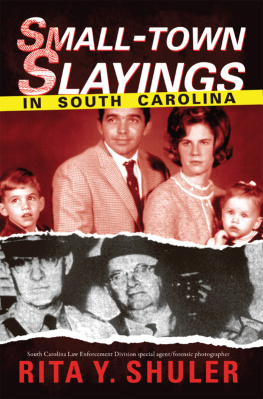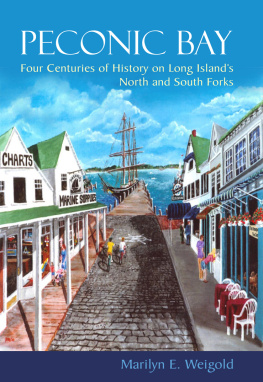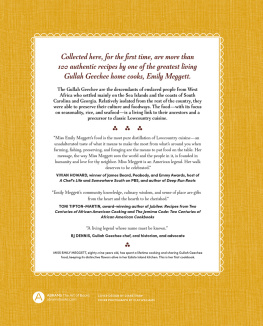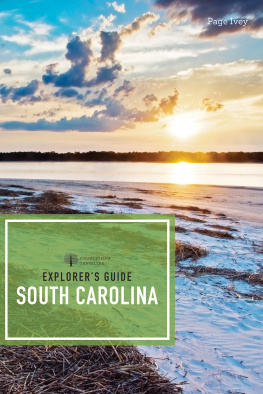

Published by The History Press
Charleston, SC 29403
www.historypress.net
Copyright 2006 by Page Putnam Miller
All rights reserved
Cover Image: A portion of a painting by Nancy Ricker Rhett from her book Beaufort and the Lowcountry portrays her family camping in the 1950s on Fripp Island. Courtesy of Nancy Ricker Rhett.
First published 2006
Second printing 2007
Third printing 2008
Fourth printing 2010
e-book edition 2012
ISBN 978.1.61423.266.7
Library of Congress Cataloging-in-Publication Data
Miller, Page Putnam, 1940
Fripp Island : a history / Page Putnam Miller.
p. cm.
Includes bibliographical references and index.
print edition ISBN-13: 978-1-59629-169-0 (alk. paper)
print edition ISBN-10: 1-59629-169-9 (alk. paper)
1. Fripp Island (S.C.)--History. I. Title.
F277.B3M55 2006
975.799--dc22
2006023899
Notice: The information in this book is true and complete to the best of our knowledge. It is offered without guarantee on the part of the author or The History Press. The author and The History Press disclaim all liability in connection with the use of this book.
All rights reserved. No part of this book may be reproduced or transmitted in any form whatsoever without prior written permission from the publisher except in the case of brief quotations embodied in critical articles and reviews.
To Charlie Davis, my husband,
whose love of the sea
greatly influenced our decision
to move to Fripp Island
and whose steady support of
my work helped make this book a
reality.
Contents
Introduction
I have known Fripp most of my life. My novels all smell of seawater. I have written, in part, to honor a landscape I carry with me wherever I go. Though I have traveled all over the world, it is the smell of the tides and marshes of Fripp Island that identifies and shapes me. Its seeds and grasses grow along the margins of my books. Its soft mosses hang like laundry from my high-strung prose. Ive made a career out of praising the Sea Islands that form the archipelago that makes Beaufort County the loveliest spot on earth to me.
The Sea Islands of South Carolina shoulder up against the Atlantic, and the trees and the vegetation on these islands are wind-shaped and salt-burnt and stunted by the great storms and swells resulting from this initial encounter with the continent. They are the first line of defense against hurricanes and those deep-throated storms out of the Northeast. There are other beaches, other oceans, but my mother Peg Conroy, who was living on Fripp until she died in 1984, staked out Fripp forever for her children. She taught us that the beach was an abundant, profligate text that never tired of serving up mysteries to explore. For the last five years of her life, my mother walked the shoreline of Fripp every day and collected basketfuls of seashells that she would place in the clear globes of lamps. Those lamps are now treasures her children keep because we love to associate our mother with the sea, the crashing of waves, the gathering up of beauty and of light itself.
Some years ago I bought my own house on Fripp where I can look out on a saltwater lagoon and watch ospreys hunt fish in my backyard, then take their catch up into the trees to eat them heads first. I have seen great blue herons kill and eat snakes and huge eels. I woke up one bright fall morning and counted three hundred egrets surrounding my lagoon in some mating ritual that looked like a dream of snow.
Because of my deep appreciation for Fripp Island, I am grateful that Page Miller, my neighbor and great friend, has written a history of this special place that I call home.
Pat Conroy
Acknowledgements
In many ways this book has been a team effort, for I have received help, suggestions and photographs from a countless number of people. Some have provided me with exceptional assistance. George Douglass, who lived on Fripp for over thirty years and was the first president of the Fripp Island Home Owners Association, gave me his Fripp files with minutes and letters that proved invaluable. Another longtime resident, Dick Anderson, gave me his collection of early newsletters and mailings from the resort. Dixie and Bill Winter, Grace Maxwell, Gini and Griff Reese and Bill and Barbara Robinson, all of whom purchased property on Fripp in the 1960s, have most generously taken time to tell me about the early days on Fripp. Among those who moved to Fripp in the 1970s, Al and Gina Schaufelberger, Knobby Walsh and Lou Cashdollar have been extremely helpful. The staff of the Fripp Island Property Owners Association has provided important information and access to back issues of the Trawler. A number of Fripps developers have granted me interviews. Charles Lesser of the South Carolina Department of Archives and History and Grace Cordial, the specialist on local resources at the Beaufort County Library, gave expert archival assistance. As I have sought to refine the manuscript, I am most grateful for the counsel of my friends Arlene Jacquette, Karen Adams and Teresa Hergert. Julie Hodgson graciously volunteered many hours to help me with the photographs. I am indebted to my husband, Charlie Davis, who has proofread many drafts and served as a valuable sounding board.
I am extremely privileged to have two people who comprehend the Lowcountry so well contribute to this book. Nancy Ricker Rhett painted the cover illustration and Pat Conroy wrote the introduction.
From my days in Mrs. Lupolds history class at Dreher High School in Columbia, many teachers have contributed to my study of history and its role in helping us understand our communities, nation and world. Numerous individuals have encouraged me in this undertaking. On one of my first visits to Fripp, I asked Dora Edwards, who then had a gift shop on the island, if there was a history of Fripp. She told me that there were no books on Fripp and suggested that I write one. My hope is that this book will aid visitors and residents of Fripp to better understand and appreciate this special island.
Chapter 1
A Place for Hunting
A small jewel of sheer beauty along the Carolina coast, Fripp Island has been shaped by the ebb and flow of tides, the fortunes and difficulties of developers and fluctuations in the residential community. With a three-and-a-half-mile beach and narrow landmasses interspersed with marsh, the island claims only two square miles above sea level. For much of its history it has stood in the shadow of its larger neighbors, St. Helena and Hilton Head Islands. Fripps remote location has discouraged commercialization and favored a family-oriented resort. The many children who have traveled to Fripp on vacations have prevented it from becoming solely a retirement community. Lush tropical vegetation, powdery white sand of the ever-changing dunes, an expansive beach and the abundance of wildlife have for many years drawn people to this exceptional place.
In a part of the South Carolina Lowcountry where hundreds of islands form a jigsaw puzzle divided by rivers, marshes and tidal creeks, Fripp is one of the barrier islands that serves as a buffer between the ocean and those islands closer to the mainland. Unlike islands that have the same bedrock as the mainland, barrier islands are formed from sand dunes that expand toward the ocean. The buildup of river sediments flowing to the sea creates small landmasses that become barrier islands. These islands lack geological stability and are active formations, experiencing constant sand migration as wind and tides transform their shores.
Next page


